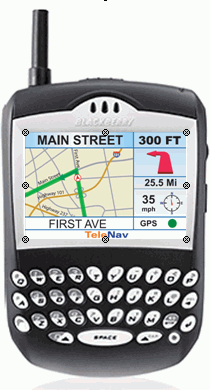
Location-based services (LBS) have resurged remarkably over this last year throughout the North American market. For over three years, location pioneers Bell Mobility and Nextel were alone in offering high precision (read GPS-based) services to their data customers. Then, last May, the silence was broken when Sprint PCS launched the Business Mobility Framework, offering location to its enterprise customers. This was quickly followed up with consumer A-GPS in September. Now with less than three weeks left in 2005 it looks as if Verizon Wireless may launch this year as well. As for GSM, SUPL (secure user plane) is finally an Open Mobile Alliance (OMA) standard, and infrastructure vendors are scrambling to line up handset manufacturers to put A-GPS onto Global System for Mobile Communications (GSM) and Wideband CDMA (W-CDMA) networks.
Three Trends Are Emerging
OK, so LBS is back, but what are the services? As discussed in a recent article in Directions Magazine, mobile workforce management is a key area. The use of relatively inexpensive mobile handsets, leveraging embedded A-GPS technology and the cellular data network, to replace traditional dedicated in-car systems has led to a revolution in the fleet management and asset tracking space. By opening A-GPS APIs to 3rd party application partners, Nextel has paved the way for a plethora of lower-cost enterprise tracking solutions. Carriers are now offering carrier-branded tracking solutions to their enterprise customers, such as the Sprint Precision Locator, launched in August. These applications can dramatically extend the value offered to customers by integrating dispatch and job control features, as well as navigation and route optimization capabilities. In this way they can do more than just eat away at the low end of the mobile workforce management market.They enable an entirely new class of services, and are quickly becoming a key competitive advantage for early adopters.
A second important trend is the treatment of location as a type of presence.Instant Messaging (IM) has become a vital communication tool in the enterprise.Linking location into IM and other online collaboration and schedule management tools has tremendous potential. In fact, it is one avenue into the holy grail of the mobile/desktop "convergence" that continues to elude us.Location as a data type is now part of both the SIP and XMPP real-time messaging standards.With the emergence of A-GPS (and other) location technologies on the major cellular networks, integration of location into these types of services is not far off.
A third approach to location services that opens up a broad new class of applications to the mobile operator is the introduction of "push" technologies into LBS. In particular, imagine that instead of directly asking for local traffic information (pull), the subscriber is notified that they are approaching a traffic accident, or a parent is notified when a child fails to show up to school on time.In a mobile context (walking, driving, etc.) it is often difficult to interact directly with a mobile application. By pushing context-sensitive content to the subscriber, this user interface limitation is largely resolved. WaveMarket has coined the term "alert-based services"� to describe this class of mobile applications, and has led the industry in bringing services such as these to market.
The Remaining Challenges
Although many important developments have occurred over the last few years, challenges still remain. Great progress has been made in A-GPS technology with regards to latency and signal sensitivity, but overall yields (success rate of the A-GPS fix) can be anywhere from 40-70%, depending on a variety of usage patterns, and TTFF (time to first fix) can be as long as 30-45 seconds.A hybrid approach to location determination technologies (such as Qualcomm's A-GPS/Advanced Forward Link Trilateration [AFLT] approach) is required, and must be used intelligently by the application provider. Privacy concerns around location and location aggregation remain.In my opinion these concerns are primarily not technical ones, as mobile operators have long been in the business of managing sensitive information, and, at least from a technical perspective, the careful treatment of location data is no different.The relatively high cost of location data continues to be a barrier, but with economies of scale, and the rapid migration to u-plane A-GPS (which leverages the data network for accessing assistance data as opposed to traditional c-plane A-GPS which uses the control channel as the bearer) costs will continue to come down.
There's no doubt that location will some day pervade mobile data services.Are we approaching critical mass? I'm betting on it.